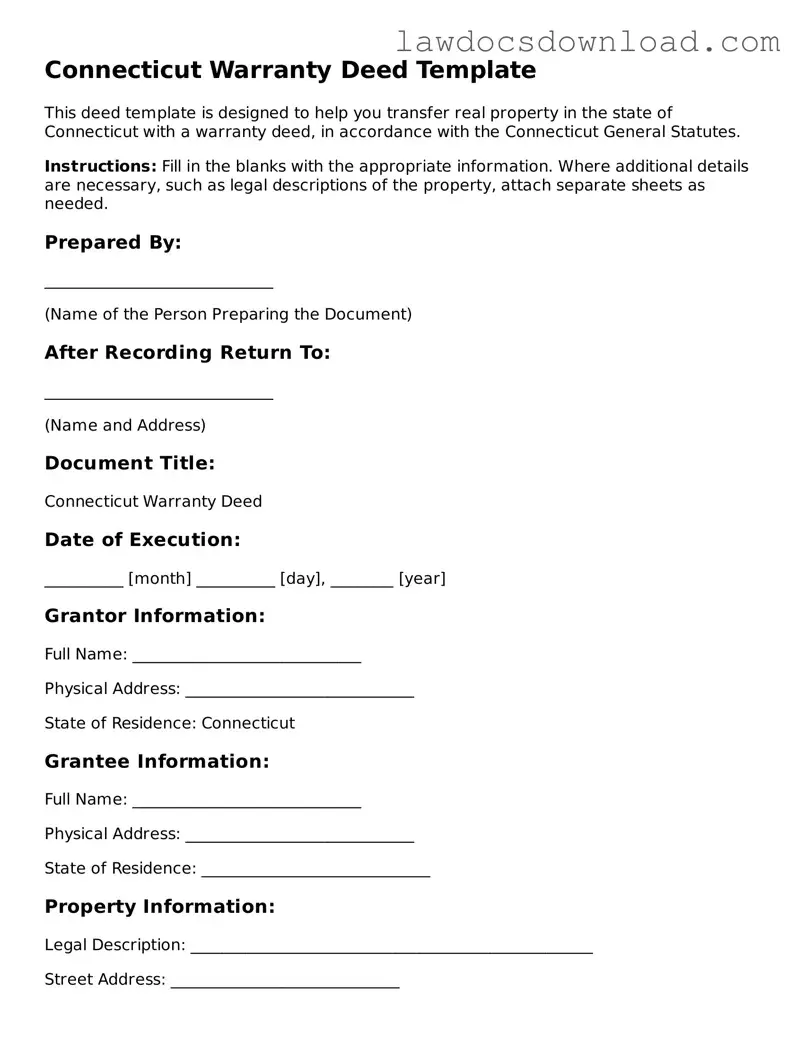Connecticut Warranty Deed Template
This deed template is designed to help you transfer real property in the state of Connecticut with a warranty deed, in accordance with the Connecticut General Statutes.
Instructions: Fill in the blanks with the appropriate information. Where additional details are necessary, such as legal descriptions of the property, attach separate sheets as needed.
Prepared By:
_____________________________
(Name of the Person Preparing the Document)
After Recording Return To:
_____________________________
(Name and Address)
Document Title:
Connecticut Warranty Deed
Date of Execution:
__________ [month] __________ [day], ________ [year]
Grantor Information:
Full Name: _____________________________
Physical Address: _____________________________
State of Residence: Connecticut
Grantee Information:
Full Name: _____________________________
Physical Address: _____________________________
State of Residence: _____________________________
Property Information:
Legal Description: ___________________________________________________
Street Address: _____________________________
County: _____________________________
State: Connecticut
Conveyance:
The Grantor(s) conveys and warrants to the Grantee(s) the above-described real property, together with all the improvements, rights, and appurtenances therein, free and clear of all encumbrances, except as specifically noted herein:
___________________________________________________
Consideration:
The total consideration for this conveyance is $_________________.
Signatures:
Witnessed by:
_____________________________ _____________________________
(Signature of Witness) (Print Name of Witness)
State of Connecticut, County of ____________________:
This document was acknowledged before me on ________ [month] ________ [day], ________ [year], by _____________________________, the Grantor.
_____________________________
(Signature of Notary Public)
My commission expires: ________
Grantor Signature(s):
_____________________________ _____________________________
(Signature of Grantor) (Print Name of Grantor)
Legal Notice:
This template provides a basic outline for a Connecticut Warranty Deed, but legal documents can carry significant legal consequences. It is recommended that you consult with a real estate attorney or legal advisor to ensure the accuracy and legality of your deed before filing it with the appropriate county recorder's office.
